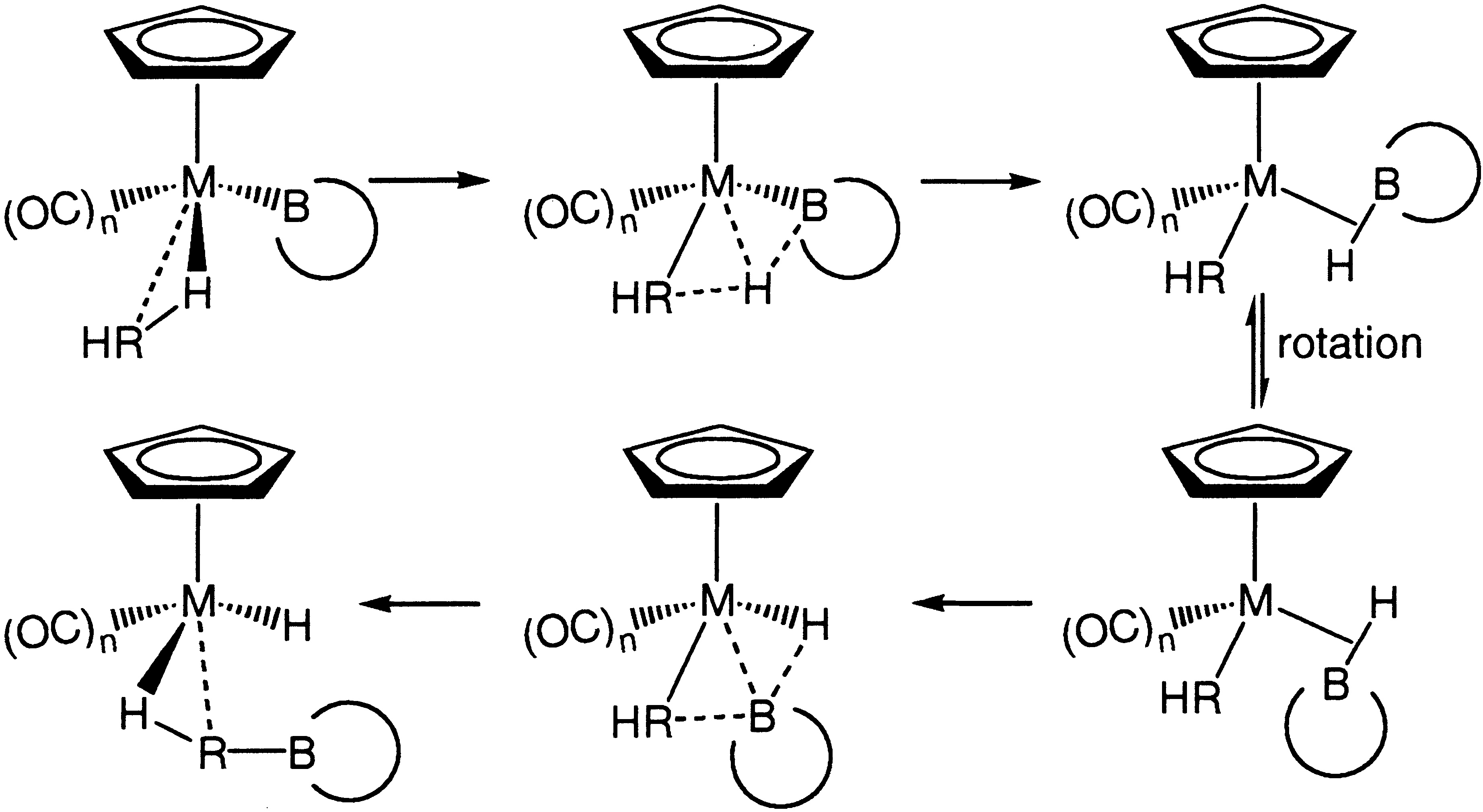Experimental and Computational Evidence for a Boron-Assisted, Sigma-Bond Metathesis Pathway for Alkane Borylation
J. Am. Chem. Soc., 2003, 125 (858-859)
View on publisher site
Abstract
Photoejection of one CO ligand from isolated CpM(CO)n+1BR2 (n = 1: M = Fe, Ru; n = 2: M = Mo,W; R2 = catecholate or pinacolate) compounds produces a coordinatively unsaturated 16 e- intermediate, a cyclic dioxaboryl transition metal complex, that can efficiently and selectively initiate regioselective C−H bond activation and can be used in the functionalization of alkanes. This chemistry appears distinct from that reported previously for related CpM(CO)n complexes of alkyl and aryl ligands. We show here by a combination of experimental and theoretical studies that the “unoccupied” p orbital of dioxaboryl ligands are intimately involved in the C−H bond activation step and that this hydrogen transfer to boron occurs by a boron-assisted, metal-mediated σ-bond metathesis. The “unoccupied” p orbital of boron lowers the energy of the transition state and the intermediates by accepting electron density from the metal. The metal-bound borane then rotates, transfers back through a σ-bond metathesis to capture the alkyl, and leaves the metal hydride.
Read on publisher's site